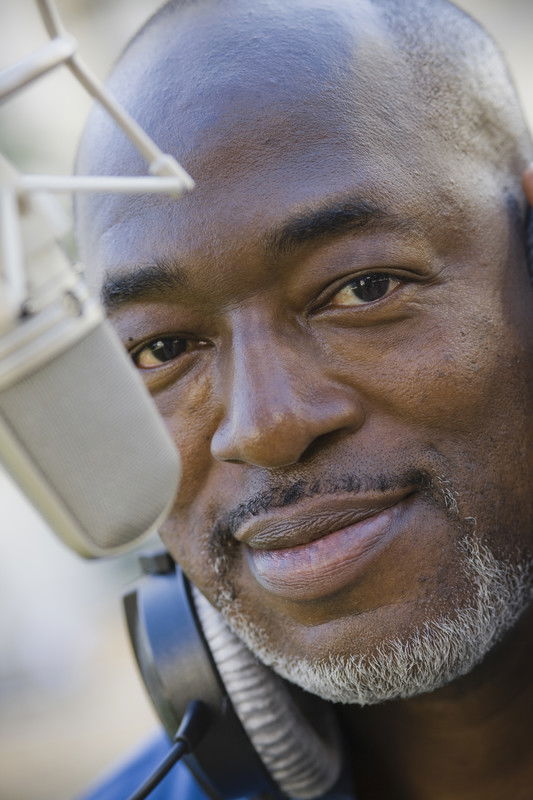AUTHOR SELF-NARRATED BOOKS

Many authors are interested in having their book made into an audiobook, and are interested in narrating the book themselves. We've listed her information to help you decide if it is right for you, and if so, what you'll need to get started.
An author reading their own book has the following advantages:
- Authors retain full control over tone, pace, and emphasis when they narrate their own books. Unlike traditional publishing, where external voices influence choices, self-narrated books reflect the author's vision more accurately.
- Hearing the author's voice adds a personal dimension, making the content relatable and memorable. Readers appreciate the direct connection.
- Writing Craft: Reading aloud forces authors to engage with their work at a deeper level. They notice nuances, identify awkward sentences, and improve overall flow.
Here we've noted some issues to be aware of if reading your own book:
- Effective narration requires clear enunciation, varied intonation, and pacing. A poorly narrated audiobook can detract from the content.
- Authors must invest in quality recording equipment and devote hours to the recording process. Balancing writing and narration can be challenging.
- Self-narratives offer creative freedom and a personal touch, but authors should weigh potential performance limitations against their own preferences. Consider if your book genre is best suited for author narration; such as a memoir, business or marketing nonfiction, self-help etc.
- Narrating is not just reading the text, but performing the text. Professional narrators know when to emphasize, when to slow down, when to pause.

All narrators should follow these important tips when narrating:
- Reading a story isn't the same as performing it for someone else.
- Listeners should lose themselves in the story, and not pay attention to the narrator, if the delivery is natural.
- Your mic should be pointed towards your throat, and you should be 5 to 6 inches away from it.
- The room (preferably the sound booth) around you should be silent. Listen quietly in your chosen recording space for any ambient noise; an AC unit, birds chirping, kids playing, lawn mowers, construction work, etc. You may need to choose a different location if any of these background noises are prevalent.
- While you record, wear clothing that does not make noise when you move and opt not to wear jewelry while recording. If you need to cough, move about in your seat or scratch an itch, stop the recording to do so.
In addition to a computer, if you don't already have the equipment to record you should plan on spending a minimum of $150 on a microphone setup which includes a pop filter. It needs to be cardioid (which means directional, not OMNI-directional). Avoid any microphone promoted as "being good for podcasts." While those may be good for that purpose, we have found they are generally lower quality and tend to have a boxy sound.
Here is a list of equipment and software you can consider:
- Rode NT-USB Mini Studio-Quality USB Microphone: https://amzn.to/45sBzji
- Recording Microphone Isolation Shield with Pop Filter: https://amzn.to/46HqJqU
- DAW (digital audio workstation) — Audacity https://www.audacityteam.org/download/
. . . and some other tutorials which would be helpful:
- Audiobook Narration Tips (on YouTube) https://bit.ly/49salN3
- Essential Audiobook Narration Skills https://bit.ly/narration-skills

In most cases, professional narrators take between 2 and 3 hours to complete one finished hour of audio recording. When working with Silverton Agency, we encourage those who are narrating to focus on the narration, not the mechanics.
Once you have recorded 10 to 15 minutes of your first chapter, listen back to what you've recorded and critique yourself. Once completed, export your files in FLAC (preferred) or WAV format, one chapter per file. If you make a mistake while recording, just snap your fingers and start at the beginning of the sentence or phrase, not in the middle of a sentence unless a comma breaks it up. If you are working with us, you can send us a recorded sample and we can provide you with a critique of overall quality and narration skill prior to recording your whole book.
During the editing process, we will remove any repeated sections and sections with errors. To ensure that the audiobook is error-free, we proofread it against the script. When sentences need to be re-recorded, we create a correction log and edit them into the original audio. Upon completion of this phase, the author is provided with an audio file to listen to and identify any errors that need to be corrected.
We would welcome the opportunity to work with you on your project. Feel free to contact us using our Contact Page.
# # #